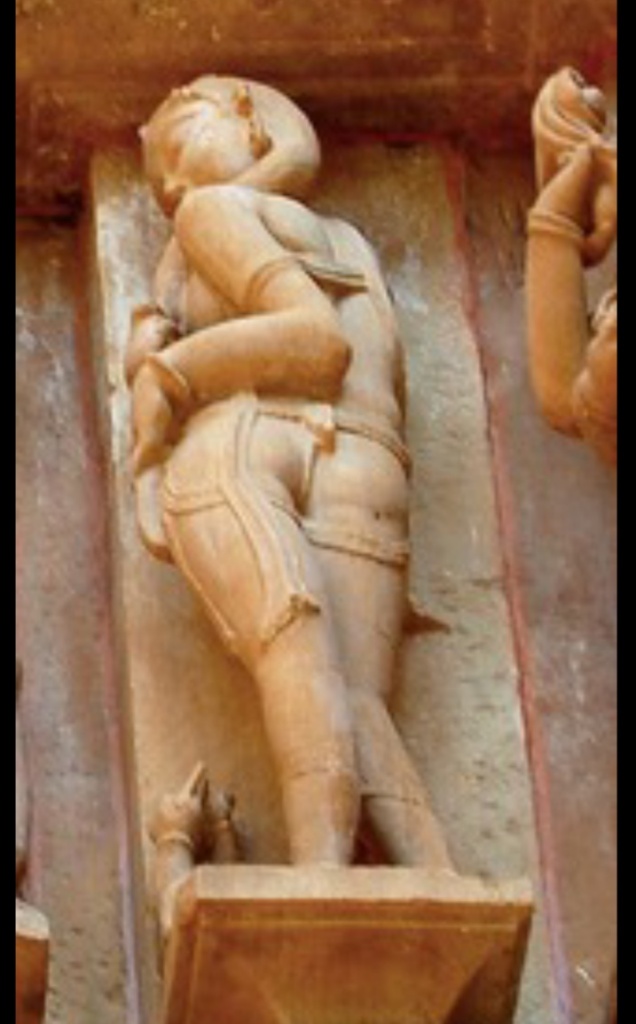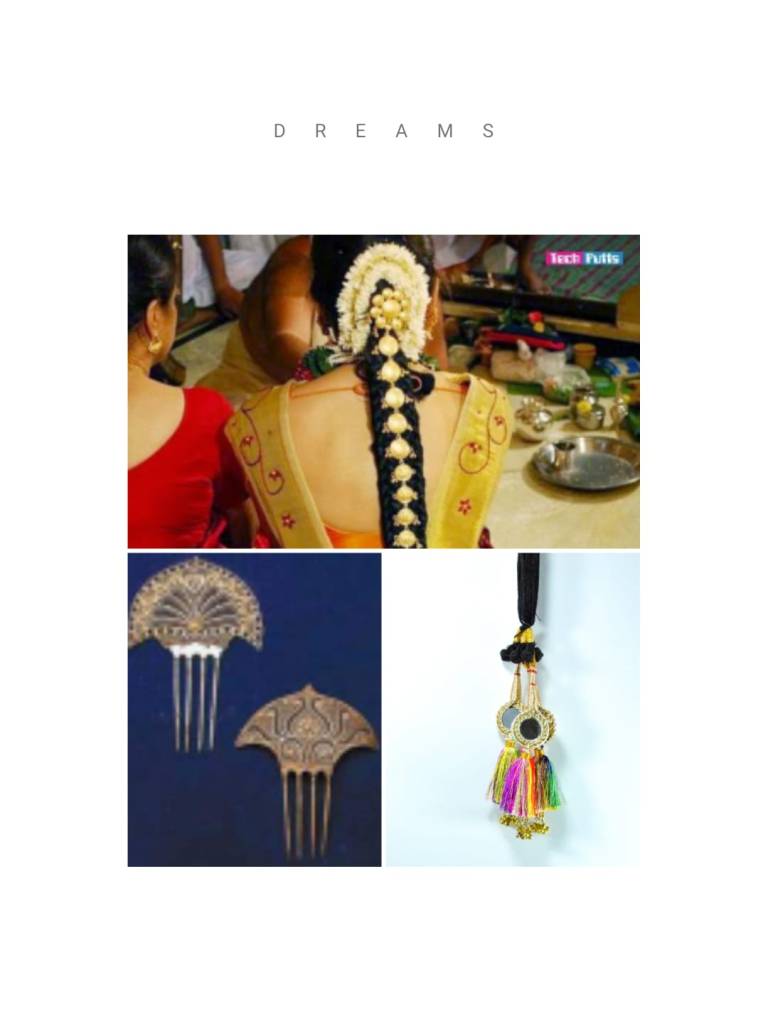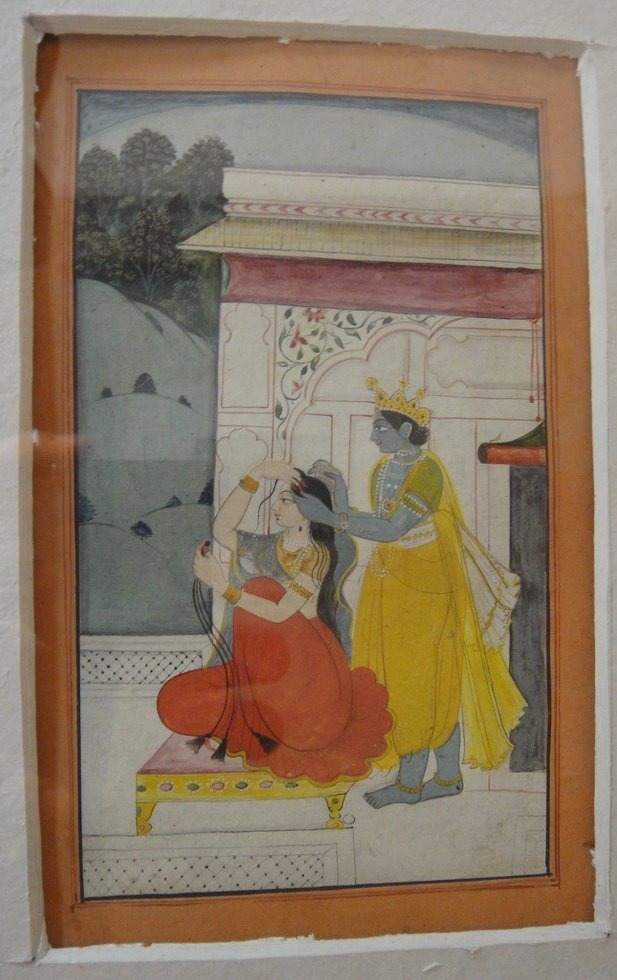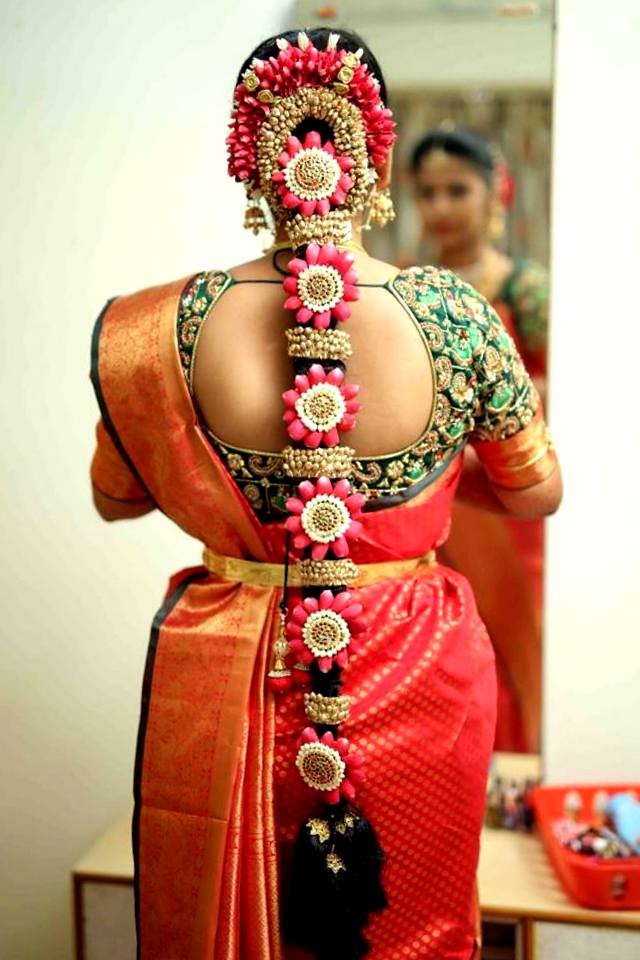
Heritage Travel Stories with Navina Jafa Kesha – Heritage of Hair – Travelling India is an experience and metaphor of Indian thought that move from one space to another. The artistic mind knows no bounds. This week’s story is that of Kesha of Hair. Come let us travel and connect the dots.
The Metaphor Hair or Kesh – flowing energy of thoughts, power of the mind, beauty, sensuality, prestige and tied hair symbolizes, among other things, collected thoughts and a disciplined mind. In India, the hair on the head has a significant role in human life rituals from birth, death, marriage and renunciation. Its importance is evident in most Indian religions – Hinduism, Sikhism, Buddhism and Jainism. The Barber and barberess in different regions of India find themselves an important place in social rituals. The Tirupati Temple in South India is one of the largest wig industries in the world.
Myths: The Gaathaas or circle of stories encapsulated in myths, forcefully convey a number of messages. Yet the hair cycle symbolizes Man’s own journey of growth, fall, and re-growth. While the matted hair of Shiva is his potent mental power, the open hair of Kali or that of Draupadi in the epic Mahabharat symbolizes wildness. Culture of Beauty: Kesh Pasha or ornamentation of the hair is central to the concept of solah ( 16) ways of adorning the woman’s body. A number of hair décor is famously documented by Veena Shroff. The snake ornament in the South of India lining the plait called the jadainagam symbolises fertility and feminine power. While the Parandi or the playful tassels and combs evoke sensuality. Hair maintenance too forms a part of the Indian heritage of hair culture.
Artistic creations:

Painting & Literature: The hair takes on different poetic implications in Indian Literature. From Sanskrit greats Bhartrihari’s Shringar Shatak, to Kalidas’ lines – The autumn comes, a maiden fair, In slenderness and grace, With nodding rice-stems in her hair. In the famed small love poem Geet Govinda – Krishna combs Radha’s hair ( seen in the number of miniature paintings such as Kangra, and is danced).

Sculpture: The representation of wet hair and the entire world of a woman emerging from a bath is captured in a beautiful sculpture in the Lakshmana Temple of Khajuraho. Renowned Scholar Dr Devangana Desai has decoded the presence of the woman squeezing the droplets of water in the mouth of the Hans ( goose/Swan) as a scene in stone taken from the 10thc Prakrit drama Karpura-Manjari by Raja-Cekhara. Most Jain manuscripts are in Prakrit and the drama of Karpura Manjari remains an important linguistic heritage document. Let us not forget in several sacred Temple sites of India there was a nexus between the ruling caste ( Kshatriyas) and the Mercantile caste-like Jains.
DANCE

The world of the Kuchipudi Dance has an intriguing cultural facet to the decor for the hair. This jewellery is called the ‘Ganiyam’ and is made of very light wood called the ‘bādida chakka’ in Telugu. It was worn by most of the Telugu performers of Bhāgavatham as it was very light and easy as well as safe to carry along on their tours.
The character I’m playing here is Satyabhama! Satyabhama is undoubtedly the favourite heroine of the Telugu people, and almost every Bhāgavatha tradition of the Telugu land has its own version of the Satyabhama and Krishna story, whether it’s the Kuchipudi Bhāgavatham, Devadasi Āta Bhāgavatham, Chindu Bhāgavatham, Toorpu Bhāgavatham, to name a few.
This particular set was recreated by my Guru, Swapnasundari Akka, along with the Kondapalli artisans, for the performances of Āta Bhāgavatham in Vilasini Natyam.
A little about this plait or ‘Veni’, also called ‘Jada’ in Telugu – Legend has it that this plait which is a micro version of the macro cosmos, was created by Vishwakarma for Vishnu when he took on the manifestation of Mohini, during the Ksheerasagara Mathanam episode. Once the purpose was served, Vishnu offered this Veni to many of the Goddesses, but none of them could take the weight of this Jada, so they politely declined!
In the Dwapara Yuga, during the war with Narakasura, Satyabhama exhibited tremendous valour and saved Krishna from the demon. Very impressed and pleased with her, Krishna gifted this Veni to Satyabhama, and she picked it up in one go and wore it upon her person with utmost ease!
This Veni represented the entire universe, so no wonder it was heavy!
Right on top, you see the snake or the Seshnag, and on either side of the crown are the pendants representing the Surya and Chandra in their respective positions. Behind the head, you also have the full Sun and half-moon. Along the length of the plait are 27 medallions symbolising the 27 Nakshatras. The plait ends with a bunch of three tassels to represent the Tribhuvanās or three worlds, and each of these has 3 smaller clusters attached, signifying the Nava Grahas! If you zoom the image, you will also see a small parrot perched on the head! This analogy of the body as the cage and the soul as the parrot or ‘chiluka’, is age-old, and the parrot here points to Satyabhama as the mortal soul in quest of herself and her lord!
In Kuchipudi Bhāgavatham, this Jada used to be displayed upon a curtain, and an elaborate narrative of song and poetry was rendered by the Sūtradhāra, which came to be known as the ‘Veni Vrttāntam’ or the ‘Legend of the Veni’.
There are so many layers and features in every single performance tradition of this country! Never ceases to amaze!”
MY EXPERIENCE — DANCE, HAIR & ME A Personal Experience in Kathak Dance On the hair It was summer and the great master Pt. Birju Maharaj began teaching a group of 3 of us ‘Shringar Gat Bhava’- A story in rhythm on the art of beautifying the self. When it came to the hair. The master emulated each thread of the hair delicately flowing in tangles through the fingers. The comb took its own journey, and the plait involved the rolling of the neck in circles. The flowers were plucked and used as ornamentation, and the bumblebee, like a lover hovered…She blushed… ( music Raga Ahir Bhairav… composition and artist Fateh Ali Khan )
“Do not seek illumination unless you seek it as a man whose hair is on fire seeks a pond.”Ramakrishna#heritagestorieswithnavinajafa#academictourism#travelstories#travelindiawithnavinajafa#culturaltechnocrat#performingindia#painting#dance#incrdibleindia#khajuraho#temple#drama#literature#poetry#krishna#navinajafa#travelstory#religion#myths #birjumaharaj #sculpture#Kathak#kathakdance#dekhoapnadesh#MadhyaPradesh#PtBirjuMaharaj#birjumaharaj#architecture#GeethaGovindam #beauty, #erotic #mindfulness
9Jayaprabha Menon, Anu Bhandari and 7 others10 SharesLikeCommentShare